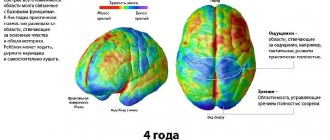What it is
The concept of social maturity implies a state of personality that is characterized by integrity of views, predictability of behavior, and social orientation of life. In other words, we can say that this is the individual’s ability to correctly perceive himself and others. We are also talking about independence, which is expressed in the ability to independently make vital decisions without the help and approval of others.
However, do not be mistaken that social maturity is accompanied by a lack of need for contact with other people. Moreover, a mature person knows how to compare his experience with the experience of others, and also soberly perceive assessments of his activities. However, significant people around you can only be advisors or critics, and not arbiters of thoughts and actions. We can say that from the moment of maturity a person becomes a full member of society.
Some researchers are inclined to believe that social maturity is expressed in certain internal attitudes that force the individual to concentrate only on those values that have a positive impact on human development. In particular, a rational attitude towards material resources is formed. A person perceives money as a means of satisfying needs, and not as a fetish object.
Term structure
Social maturity includes the following key types of maturity:
- Civil. This is an awareness of one’s duty to the country and society. This also includes awareness of the need for work, as well as responsibility for its results. This category includes awareness of prohibited and permitted actions, as well as responsibility that may arise when going beyond the boundaries defined by the state and society.
- Ideological and political. This means having a formed idea of the direction in which the state and society should develop. We can also talk about active participation in civil and political processes taking place in society.
- Moral. Acceptance of moral standards and their application in real life, presence of conscience, ability to empathize. This can also include awareness of the meaning of creating a family.
- Aesthetic. The ability to feel and perceive beauty in nature, art and everyday life.
Indicators of human social maturity
It is worth noting that the signs of a person as a mature member of society are quite blurred. Different researchers estimate this parameter differently. Nevertheless, most experts agree with the opinion of Sukhobskaya, who identifies the following indicators of a person’s social maturity:
- The ability to independently predict one’s behavior in various life situations, based on the ability to obtain and analyze information. It is also about the ability to relate the conclusions drawn to a specific situation and field of activity.
- The ability to mobilize internal and physical resources to implement one’s own decision. At the same time, it is important to have the ability to withstand both external obstacles and internal barriers (laziness, fatigue, lack of motivation).
- The ability to independently monitor and evaluate the progress of one’s own actions, as well as results at intermediate stages and at the end of work.
- The ability to impartially and objectively evaluate one’s own thoughts and actions.
- The ability to learn lessons both from one’s own actions and from the experiences of others. Thanks to this, the quality of predicting behavior and its results should improve.
- The ability to adequately respond to one’s own behavior and surrounding situations.
Main criteria
Researchers identify the following basic criteria for the social maturity of an individual:
- Awareness of responsibility. A person must be aware of his choice, and also take responsibility for the consequences of its implementation. That is, a mature person should look for answers to questions in himself, and the reasons in other people and external circumstances.
- Independence within reasonable limits. A person must have internal freedom of choice. However, the individual must be aware of the limits when the exercise of one's own freedom may cause discomfort to others.
- The ability to distinguish reality from fantasy. A mature person must be able to soberly assess his capabilities in order to live in a state of “here and now”, and not fantasize groundlessly. Also, an individual should not make unrealistic promises to others.
- A sense of personal integrity and moral principles. A mature person must accept himself entirely, without hiding his shortcomings and weaknesses. He should also perceive failures as a lesson, and not as a tragedy. At the same time, you need to behave in accordance with moral standards. This should happen out of inner convictions, and not out of fear of punishment.
- Ability to adapt. A person must be able to abandon those beliefs and forms of behavior that are no longer relevant. Old established models can hinder development, which can lead to serious disagreements with society.
- Tolerance. A mature person must understand that people are not the same. The difference is due to gender, age, nationality, professional and other characteristics. This must be treated with patience and understanding, without showing aggressive emotions. Tolerance should concern not only individuals, but also their point of view.
- Self-criticism. A mature person should be able to see his shortcomings. He accepts some of them with humor, while others encourage him to work on himself and improve himself.
- Spirituality. This is a necessary condition for human development, which determines harmonious interaction with the world, the formation of one’s own “I”.
How to write a term paper on speech therapy
07.09.2010 257552
These guidelines are compiled to help students gain an understanding of the content and structure of coursework in speech therapy.
Logopedia of pedagogical science that studies anomalies of speech development with normal hearing, explores the manifestations, nature and mechanisms of speech disorders, develops the scientific basis for overcoming and preventing them means of special training and education.
The subject of speech therapy as a science is speech disorders and the process of training and education of persons with speech disorders.
The object of study is a person suffering from a speech disorder.
The main task of speech therapy as a science is the study, prevention and elimination of various types of speech disorders.
Coursework in speech therapy is a student's scientific and experimental research. This type of educational activity, provided for by the educational and professional program and curriculum, contributes to the acquisition of skills in working with literature, analyzing and summarizing literary sources in order to determine the range of insufficiently studied problems, determining the content and methods of experimental research, processing skills and qualitative analysis of the results obtained. The need to complete coursework in speech therapy is due to the updating of knowledge concerning the content, organization, principles, methods and techniques of speech therapy work.
As a rule, during their studies, students must write two term papers - theoretical and practical.
The first course work should be devoted to the analysis and synthesis of general and specialized literature on the chosen topic. Based on this analysis, it is necessary to justify and develop a method of ascertaining (diagnostic) experiment.
In the second course work, it is necessary to provide an analysis of the results obtained during the ascertaining experiment, as well as determine the directions and content of speech therapy work, and select adequate methods and techniques of correction.
So, let’s present the general requirements for the content and design of coursework in speech therapy.
The initial and most important stage of working on a course project is the choice of a topic, which is either proposed by the supervisor or chosen by the student independently from a list of topics that are consistent with the areas of scientific research of the department.
Each topic can be modified, considered in different aspects, but taking into account a theoretical and practical approach. Having chosen a topic, the student needs to think through in detail its specific content, areas of work, practical material, etc., which should be reflected both in the formulation of the topic and in the further construction of the study. It should be recalled that the chosen topic may not only have a purely theoretical orientation, for example: “Dysarthria. Characteristics of the defect”, “Classification of dysgraphia”, but also take into account the practical significance of the problem under consideration, for example: “Speech therapy work on speech correction for dysarthria”. It should also be taken into account that when formulating a topic, excessive detail should be avoided, for example: “Formation of prosodic components of speech in preschoolers of the sixth year of life attending a preschool institution for children with severe speech impairments.”
The course work includes such mandatory parts as: introduction, three chapters, conclusion, bibliography and appendix.
The text of the term paper begins with the title page . An example of its design can be seen here.
Then the content of the work is given, in which the names of chapters, paragraphs, and sections are formulated in strict accordance with the content of the thesis. An example of its design can be seen here.
In the text, each subsequent chapter and paragraph begins on a new page. At the end of each chapter, the materials are summarized and conclusions are formulated.
The introduction reveals the relevance of the problem under consideration in general and the topic being studied in particular; the problem, subject, object, and purpose of the study are defined. In accordance with the goal and hypothesis, objectives and a set of research methods aimed at achieving the objectives must be defined.
The relevance of the topic lies in reflecting the current level of pedagogical science and practice, meeting the requirements of novelty and usefulness.
When defining the research problem, it is important to indicate what practical tasks it will help to implement in training and educating people with speech pathology.
The object of research is understood as certain aspects of pedagogical reality, perceived through a system of theoretical and practical knowledge. The ultimate goal of any research is to improve this object.
The subject of research is some part, property, element of an object, i.e. the subject of research always indicates a specific aspect of the object that is to be studied and about which the researcher wants to gain new knowledge. An object is a part of an object.
You can give an example of the formulation of the object, subject and problem of research:
– The object of the study is the speech activity of preschool children with phonetic-phonemic speech disorders.
– The subject of the study is the features of intonation speech of children with phonetic-phonemic speech disorders.
– The research problem is to determine effective directions for speech therapy work on the formation of intonation expressiveness of speech in the system of correctional intervention.
The purpose of the study contributes to the specification of the object being studied. The goal of any research is to solve a specific problem. The goal is specified in tasks taking into account the subject of research.
The research objectives are formulated in a certain sequence, which determines the logic of the research. The research objectives are set on the basis of a theoretical analysis of the problem and an assessment of the state of its solution in practice.
The first chapter is an analysis of literary sources, which examines the state of this problem in historical and modern aspects, and presents the most important theoretical principles that formed the basis of the study.
When writing the first chapter, you should pay attention to the fact that the text of the course work must be written in a scientific style. When presenting scientific material, it is necessary to comply with the following requirements:
– Specificity – a review of only those sources that are necessary to disclose only a given topic or solve only a given problem;
– Clarity – which is characterized by semantic coherence and integrity of individual parts of the text;
– Logicality – which provides for a certain structure of presentation of the material;
– Reasoning – evidence of thoughts (why this and not otherwise);
– Precision of wording, excluding ambiguous interpretation of the authors’ statements.
A literary review of the state of the problem being studied should not be reduced to a consistent presentation of literary sources. It should present a generalized description of the literature: highlight the main directions (currents, concepts, points of view), analyze in detail and evaluate the most fundamental works of representatives of these directions.
When writing a work, the student must correctly use literary materials, make references to the authors and sources from which the results of scientific research are borrowed. Failure to provide required references will reduce your coursework grade.
As a rule, in coursework on speech therapy, references to literary sources are formatted as follows: the number of the cited source in the general list of references is placed in square brackets. For example: General speech underdevelopment is a speech pathology in which there is a persistent lag in the formation of all components of the language system: phonetics, vocabulary and grammar [17].
When using quotations, in square brackets, in addition to indicating the source number, the page number from which this excerpt is taken is indicated, for example: Speech rhythm is based on a physiological and intellectual basis, since, firstly, it is directly related to the rhythm of breathing. Secondly, being an element that performs a communicative function, “correlates with meaning, i.e. controlled intellectually” [23, P.40].
However, course work should not be of a purely abstract nature, so you should not abuse the unreasonable abundance of citations. Quoting should be logically justified, convincing and used only when really necessary.
In the second chapter , devoted to experimental research, the organization should be described and the program of the ascertaining experiment should be presented. The survey methodology, as a rule, consists of a description of several series of tasks, with detailed instructions, visual and lexical material, the procedure for completing tasks by experiment participants, and scoring criteria. This chapter also provides a qualitative and quantitative analysis of the results obtained.
When analyzing the results of an experiment, it is necessary to use a scoring system. Examples of various criteria for quantitative and qualitative assessment are presented in the following works:
– Glukhov V.P. Formation of coherent speech in preschool children with general speech underdevelopment. - M.: Arkti, 2002. - 144 p.
– Fotekova T.A. Test methodology for diagnosing oral speech of primary schoolchildren. - M.: Arkti, 2000. - 56 p.
– Levchenko I.Yu. Pathopsychology: Theory and practice. - M.: Academy, 2000. - 232 p.
In order to visually present the results obtained during the experimental study, it is recommended to use tables, graphs, diagrams, etc. Histograms can be used in a variety of ways - columnar, cylindrical, planar, volumetric, etc. An example of the design of tables, figures, and histograms can be found here.
The third chapter provides a rationale for the proposed methods and techniques and reveals the content of the main stages of correctional work.
The conclusion contains a summary of the material presented and the main conclusions formulated by the author.
The bibliography must contain at least 25 sources. The list includes bibliographic information about the sources used in preparing the work. An example of its design can be seen here.
In the application you can present bulky tables or illustrations, examination protocols, observation records, products of activity (drawings, written works of children), notes from speech therapy classes, etc.
The volume of one course work must be at least 30 pages of typewritten text.
In general, coursework in speech therapy is the basis for a future thesis, in which the study of the begun problem can be continued, but from the standpoint of a different approach or a comparative analysis of the disorders being studied in different age categories of people with different types of speech disorders.
The content and format of theses in speech therapy can be found here.
Literature:
1. How to write a term paper on speech therapy: Methodological recommendations. Educational and methodological manual / Comp. Artemova E.E., Tishina L.A. / Ed. Orlova O.S. – M.: MGOPU, 2008. – 35 p.
2. Research work of students in the system of higher professional pedagogical education (specialty 031800 - Speech therapy). Methodological recommendations for completing the thesis / Compiled by. L.V. Lopatina, V.I. Lipakova, G.G. Golubeva. - St. Petersburg: Publishing house of the Russian State Pedagogical University named after. A. I. Herzen, 2002. - 140 p.
Levels of social maturity
Society is heterogeneous. Its members are characterized by different directions of thoughts and actions, as well as different degrees of development. In this regard, the following levels of social maturity are rightly distinguished:
- Optimal. A person has formed value orientations (in social, professional and family life) that do not conflict. There is a focus on developing intellectual abilities and realizing creative potential. As a rule, there are realistic ideas about life prospects and areas of activity. At the same time, there is a steady interest in understanding the events and phenomena of the surrounding world.
- Valid. The situation of social maturity is determined by the motives of well-being and prestige, which is expressed in the choice of sphere of activity, circle of friends and ideological orientations. The personality is characterized by uncertainty and inconsistency of choice, which is highly susceptible to the influence of a changing situation. Depending on how the mood in society changes, plans and views are revised. People, as a rule, are not ready for independent life and associate achieving success with external circumstances and the actions of other people.
- Critical. The situation of social maturity is determined by the lack of motivation for development. The main desire in life is to avoid troubles and uncomfortable situations. As a rule, such people do not show interest in events taking place in society and the world around them as a whole. They are not psychologically prepared to resolve issues related to social development and life choices.
Socialization and social maturity of the individual
Socialization is a process during which a person with certain biological inclinations acquires the qualities and experience necessary for life in society. The most important institutions of socialization: family, school, other educational institutions, children's and youth organizations, subsequent active labor activity.
There are primary (training, formation of an image of reality) and secondary (related to the division of labor) socialization.
Stages of personality socialization: 1) Childhood – lasts from birth until entering school. At this stage, the child’s personality is formed and his preparation for adult life occurs. The role of parents and other family members is great. 2) Youth – from the moment of entering school until the end of full-time forms of general and special education. At this stage, a person acquires broader knowledge, completes the formation of the foundations of his personality, and determines his place in the environment of life. 3) Maturity stage – covering the period of active labor and social activity. At this stage there is a process of mastering social statuses and roles; there is an active inclusion of social, political and other spheres of society in production. 4) Old age - after the cessation of active work, socialization continues. A person is able to make a significant contribution to the reproduction of social experience and pass it on to new generations.
Maturity is an achieved high level of development of psychological, physiological, intellectual, emotional, volitional and moral parameters of the individual.
In order to say: “I am a mature person,” it is necessary to have responsibility (a person believes that the answer for everything that happens to him in life is only himself), patience, self-development (this includes self-control, self-control, self-organization and self-esteem, self-regulation and self-affirmation ) and developed personality thinking (flexibility, depth of mind, mobility, etc.)
Self-esteem of personality
Self-esteem is a moral assessment of one’s own actions, moral qualities, beliefs, motives; one of the manifestations of moral self-awareness and conscience of an individual.
Self-esteem can be underestimated, overestimated and adequate (normal).
Based on inflated self-esteem, a person develops an idealized idea of his personality, his value to others. He does not want to admit his own mistakes, laziness, lack of knowledge, incorrect behavior, and often becomes tough, aggressive, and quarrelsome.
Obviously low self-esteem leads to self-doubt, timidity, shyness, and the inability to realize one’s inclinations and abilities. Such people usually set lower goals for themselves than those they could achieve, exaggerate the significance of failures, are in dire need of support from others, and are too critical of themselves.
Adequate self-esteem by a person of his abilities and capabilities usually ensures an appropriate level of aspirations, a sober attitude towards successes and failures, approval and disapproval. Such a person is more energetic, active and optimistic.
Formation and development of personality
The formation of personality is its development under the influence of purposeful influences, it is the process of assimilation of the reflected reality and social experience.
Factors in the formation and development of personality: 1) spontaneous factors (the media, comrades and neighbors, the street, everything that does not depend on our consciousness); 2) purposeful factors (education, training, individual work, school, institute);
3) self-formation - systematic, personal influence on oneself for a specific purpose.
Conditions for effective personality formation: 1. Natural and biological (habitat), 2. Favorable social conditions; 3. Highly qualified and socially significant work;4. Organizational and educational activities
The concept and structure of human activity.
Activity is a specific type of human activity aimed at knowledge and creative transformation of the surrounding world and oneself.
In the process of action, a person creates: objects of material and spiritual culture, transforms and develops his abilities, preserves and improves nature, builds a society and creates a system of social relations in it, changes himself.
Activity includes: the motive of the activity, the goal, subject, structure and means of the activity.
Motive is what motivates people to take action. The motive for action is usually needs (material, spiritual, cultural, social)
A goal is what a person strives for, what he works for, what he fights for, what he wants to achieve in his activities.
Goals are generated by social life, the conditions in which a person lives and depend on public orders, on his development and individual characteristics.
The subject of the activity is what the person directly deals with. The subject of training is knowledge, abilities, skills. The subject of labor is a material product.
The structure of the activity includes 2 structural elements: Actions (independent, a goal realized by a person) and operations (the method of carrying out the activity).
Means of action - tools for carrying out activities.
Puberty
When studying the social situation of development in adulthood, close attention is paid to issues of puberty. It would be wrong to consider this aspect solely from a biological point of view. In addition to physiological processes, it is also worth highlighting the changes occurring in the central nervous system, which leaves an imprint on social life. Here's what we're talking about:
- intensive personality formation;
- change in attitude towards members of the opposite sex;
- the need for sensitive attitude from those close to you;
- manifestation of initiative and independence;
- the need for tact and respect from others.
As for social puberty, its onset, as a rule, is separated in time from biological maturity. We are talking about a responsible attitude towards sexual life, in particular, towards the conception and birth of children. A person realizes the need to create favorable conditions for the implementation of this function.
Children's maturity
The social maturity of a child means age-appropriate ability to communicate with peers, as well as older people. We are also talking about the child’s ability to perceive norms and rules, as well as follow them. In order to understand how much a child’s social development corresponds to his age, it is enough to show a little observation. As a rule, kindergarten teachers or school teachers have the best opportunity.
A basic sign of a child’s maturity is the ability to get along with peers, interact with them during play and learning, as well as the ability to adequately defend oneself in the event of attacks and aggression. The child must also be capable of changing communication styles. That is, behavior in society with children and adults, with acquaintances and with strangers should be appropriate. The child must understand where he can play and joke, and where he needs to behave calmly and seriously.
Another criterion for the social development of maturity in a child is the ability to perceive and comply with established rules and norms. Most children agree that they should not fight, take other people's things, and so on. Nevertheless, not everyone agrees with these norms and follows them. This is one of the key indicators by which maturity can be judged.
Levels of personality maturity (Soul)
The description of these levels is based on the 7 subtle human bodies. I described the 7 subtle bodies in more detail HERE, and there is also a diagram there that can be used to better understand the levels described below.
Briefly, the 7 subtle bodies/planes of existence can be described as follows:
body/plane No. 7 - atmanic body - my mission, purpose, my destiny body/plane No. 6 - buddhial body - my true desires, values - WHAT DO I WANT? body/plane No. 5 - causal body - event flows - WHAT AM I DOING? body/plane No. 4 - mental body (thoughts, beliefs) WHAT DO I THINK? WHAT DO I PLAN? body/plane No. 3 - emotional body (astral) WHAT DO I FEEL? body/plane No. 2 - energy body (ethereal) - sensation of energy in the body body/plane No. 1 - physical body - sensations in the body from the 5 senses
An infantile personality is an adult who behaves like a (baby) . For such a person, life goes on at the first three subtle levels - physical, energetic, and emotional. Positive emotion is the goal of his day, drink beer, have fun. It’s even difficult to talk to him about something; his mental plan is not included. It is impossible to discuss with such a person the meaning of his life, values, desires. There is chaos in his head. Such a person is bound to be rejected. He is being persecuted because he is not responsible for his actions. He is in a good mood, everyone is good, he is in a bad mood, everyone is bad. And he is forced to adapt because he is being driven. Adaptation consists in the fact that he rises to the next level - mental.
Adaptation – an adult who behaves like a (child) . He begins to learn what is right, what is wrong at the level of rules, learns the rules of external space. He begins to behave correctly, and they begin to persecute him less. But these are actions that he organizes from below, from the rules. And they need to be organized from above, from one’s own desires and feelings. If you don't feel it, don't do it. And he is not yet a sentient being on the mental plane. He feels if you pinch him, but I'm talking about other feelings. Then he adapts more comfortably and moves to the level of successful adaptation. That is, his event plan begins to improve.
Successful adaptation is an adult who behaves like a (teenager) . These are people who establish connections in society, receive a specialty, and income. In general, the person just settled down well. His event flow (causal plan) is established, but it is again established from below. And it should be on top. Therefore, when you try to talk to him, you see that he seems to have nothing behind his soul. He always says what is right and what is wrong. Everyone is each other's enemies. You can't rely on anyone. You have to work and earn money. That's how cool I am. And he begins to tell his successes in adaptation. But you can’t have a heart-to-heart talk. Because his feelings are not conscious. Next comes the stage of research itself, this is the transition to the inner space. Before this, there was the development of external space.
Adolescent maturity
Adolescence is considered one of the most difficult in both psychology and sociology. It is during this period that active personality formation occurs. Here are the main value indicators of the social maturity of adolescents:
- Moral standards. Shifts in the intellect of a person who has reached adolescence allow him to assimilate generally accepted moral standards, as well as be guided by them in his activities and judge on their basis the behavior of other people. In addition, one forms one’s own beliefs that make up one’s moral character.
- Worldviews. As mental development occurs, horizons broaden and theoretical interests develop. The teenager begins to recognize himself as part of society and gradually approaches the choice of a future place in it. This determines the main motives of activity.
- Collectivism. Teenagers, as a rule, strive to demonstrate and prove their weight and importance in adult society. Thus, they strive for collective life and activity. Collaboration skills are developed while maintaining independence of judgment.
- Social responsibility. When communicating with others, teenagers often find themselves in situations that force them to make independent decisions. This process is accompanied by consideration of alternatives and selection of the best one. Moreover, the teenager bears individual responsibility for the choice he makes.
- Self-esteem. It is important for a teenager to objectively evaluate their achievements in activities that are meaningful to them. This is how reorientation occurs. Internal assessment becomes more important than external assessment.
- Meaning of life. With the onset of adolescence, the individual begins to work on revealing his inner world. It is in knowing oneself and finding one’s purpose that the meaning of an individual’s life at a young age lies.
- Family. With the onset of adolescence, relationships with family members begin to develop in a new way. As a rule, the desire to find one’s unique “I” is accompanied by complications in relationships with parents. Nevertheless, the family continues to play a decisive role in the formation of personality.
Transition from external space to internal space
The study itself is an adult who behaves like a (youth) . A person begins to think: guys, we don’t live by those things at all. We are all parts of God, we are all brothers, sisters. And we must live in love, equality, sincerity and harmony. A person jumps straight into the ideals of the atmanic plane. And accordingly, he is not adequate here. Because he can't live from here. There is a gap between the event plan (causal) and the atmanic one.
These are people who enthusiastically go into the inner world and engage in self-development . But, as a rule, here at this stage it is chaos. A person will try everything. He has no Path here. He doesn’t become, for example, a yogi and went. He runs to astrology, and yoga, and wherever. We cleanse the chakras, and we will receive initiation into the Buddhist traditions, and it doesn’t hurt to study Kabbalah. That is, everything here is delightful, because it is internal, and it has enormous power. There is enormous power there. That is, the person says: here, here everyone needs it. But he doesn’t know how to get here. Sooner or later he realizes that enough is enough, he needs to do something. That is, if you want to do yoga, let’s do it, if you praise yoga so much. And then he moves to the stage of maturity. He takes a path.
Maturity (adult) . The stage of maturity is figuring out your own attitude towards everything that is in this world. A person must find his own attitude, not the bookish one. That is, a person must begin to feel everything. And it is precisely at this stage that a person begins to deal with what prevents him from feeling. And this showdown is very serious. His life, profession, family may radically change, there may be a divorce, anything. Because he can't lie anymore. That’s it, hypocrisy is no longer allowed, as it distorts a person’s space.
Therefore, he will remove all sources of hypocrisy. Change space. And, in fact, he will go into his own space. He should have his favorite activity, favorite people, favorite place, etc. Everything that is not mine must be removed by a person. That is, at the stage of self-research, a person jumped to the atmanic plane. At the stage of maturity he descends to the Budhial plane. And he begins to study his values, what is really important to me and what is not important. This is how integrity arises. It doesn’t matter, don’t do it, it matters, go do it.
Integration (elder) . This is the stage when a person has matured, when he has realized his values, integration occurs. His buddhic plan is completely linked with the event plan (causal). He does only what he wants and realizes his Purpose.
Full implementation (wise) . This is a spiritual path. The person as a person has matured. And that’s it, he has nothing more to learn about himself. In the outer space I know myself, in the inner space I know myself. What to study? He is already going to God, into solitude.
Typology of teenagers
Given the complexity of adolescence, it is not surprising that children develop heterogeneously and in different directions. According to the degree of social maturity, the following types of adolescents can be distinguished:
- Oriented towards adults and adult life. The character of adolescents is completely determined by the norms that are set and established by elders (parents, teachers). This type is characterized by a low level of maturity.
- Community-oriented teenagers. They are characterized by a high level of maturity. Such individuals are characterized by searching for their place by joining a team. Although this greatly facilitates their social life, it hinders their cultural and intellectual development.
- Teenagers confronting themselves. They do not want to have common traits and interests with representatives of their generation. This manifests itself in unusual hobbies and antisocial behavior. The purpose of this behavior is self-affirmation.
- Focused on extra-institutional norms. Teenagers unite in groups living “their own” lives, different from the generally accepted ones (informal movements). As a rule, communities are formed according to age.
- Seeking to go beyond the group. Such teenagers strive for active activity and learning new things.
Psychological maturity of the individual
When we talk about the psychological maturity of an individual, we are already talking about psychology, and not about society. And psychology is the science of the Soul.
Since the Soul is an eternal being, as I have already repeated several times, we cannot limit the Soul to 90 years of life. We need to expand our consciousness and rise a little higher to see the bigger picture.
I heard an excellent metaphor on this topic from Alex Yanovsky.
If you look out the window from the first floor, you can only see the trunk of a tree growing under the window. If you look out the window from the 5th floor, you can see the tree crown and the street. If you look out the window from the 10th floor, you can see the entire area and the stadium in the distance.
So I suggest you look at the maturity of a person from the 10th floor.
Since the whole world is a fractal or hologram, we can transfer the same periods of development from a period of 90 years to Eternity.
And then we will consider the maturity of the personality (Soul) in the following periods:
infant (infantile personality) child (adaptation) teenager (successful adaptation) youth (exploration itself) adult (maturity) old man (integration) wise (full realization, like Buddha, Christ)
Maturity of young people
The formation of social maturity of young people is characterized by the following key properties:
- Irreversibility. The development process is characterized by the constant accumulation and increase of knowledge and experience. The amount of knowledge does not decrease, but over time some of it may lose its relevance.
- Directionality. The development of a young person has a specific goal, which is expressed in the desired state of the future. This is usually social status and marital status.
- Pattern. In the process of development, significant natural connections between processes and phenomena of reality are revealed.
The social maturity of young people is manifested in several areas at once. Namely:
- Civil. We are talking about legislative norms that determine a person’s competence in certain matters. Thus, civil capacity begins at the age of 21, and by the age of 30 a person receives the right to participate in elections to executive positions. At the age of 35, a person can already aspire to the highest post in the state - President.
- Economic. Professional self-determination is followed by obtaining a certain level of qualifications followed by employment. Different professional and social groups have different levels of material income. As a rule, it is lowest among representatives of blue-collar occupations. Therefore, most young people strive to obtain a highly qualified specialist diploma. This opens up a wide range of opportunities for career self-realization and increasing the level of material well-being.
- Spiritual. After the completion of adolescence, the formation of the worldview and life principles is completed. A person clearly understands what is good and what is bad; his actions are guided not only by profit, but also by conscience. However, at the age of approximately 27-28 years, a spiritual and ideological crisis occurs, during which a revision of the value system occurs.
- Family. As a rule, the main indicator of independence and responsibility of young people is the creation of a family and the birth of children. Moreover, this process must occur consciously, with preliminary preparation of the material base.










